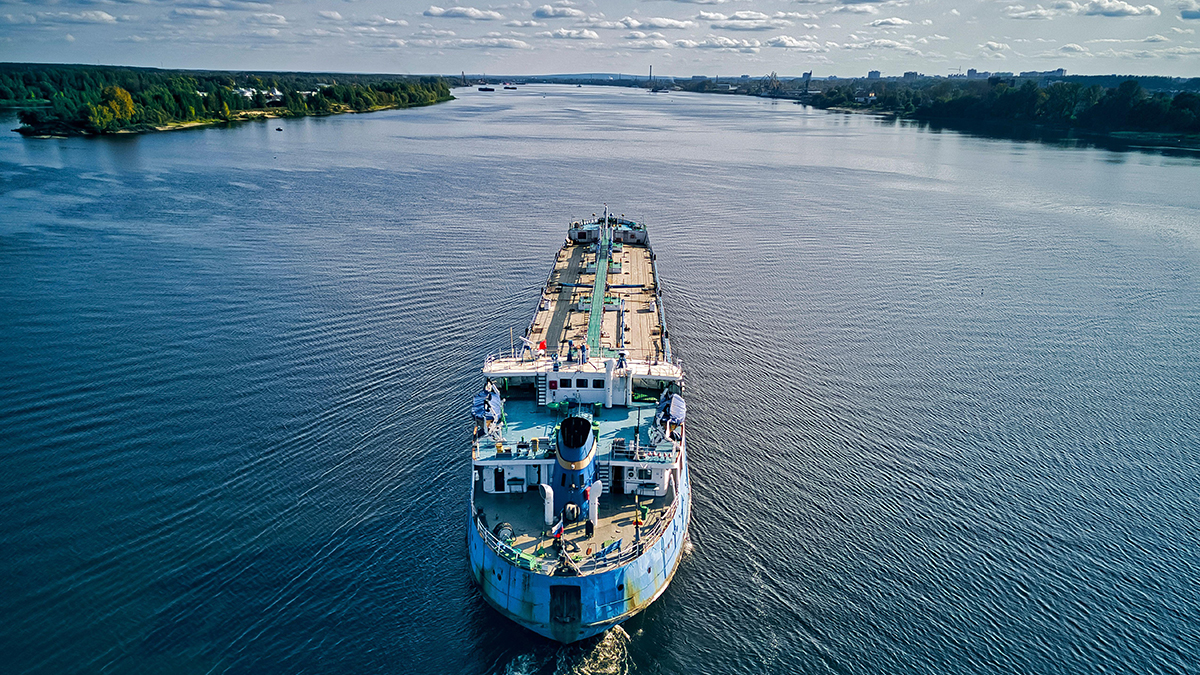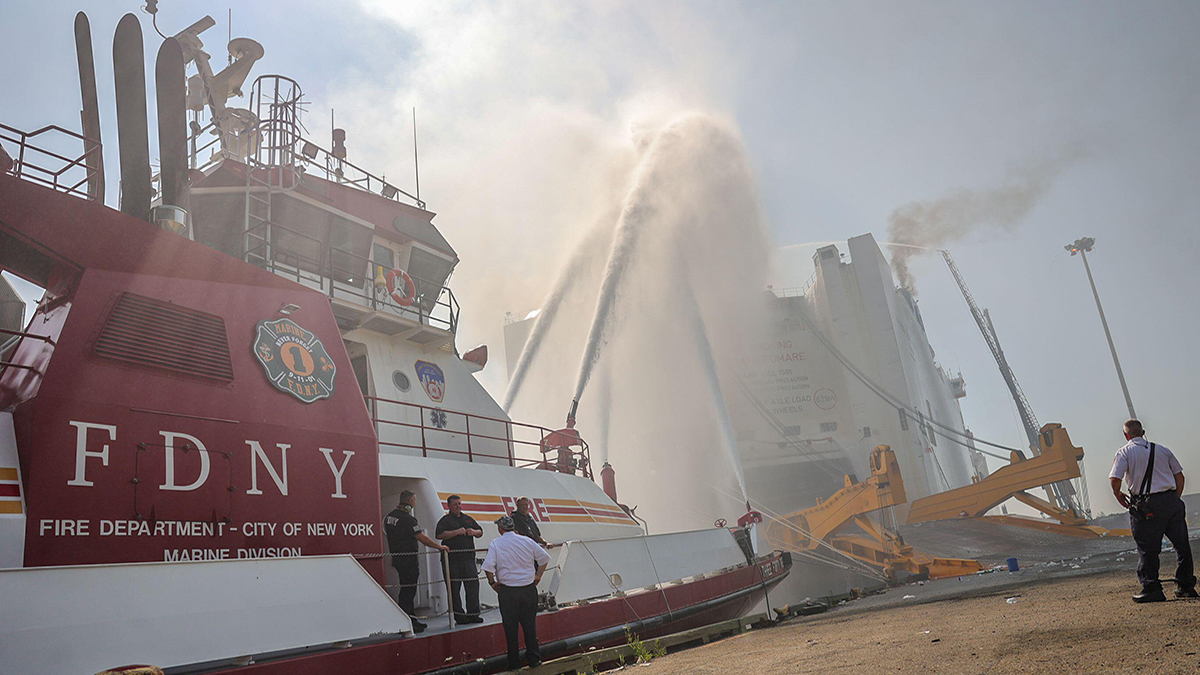Arctic Council ‘virtually meaningless without Russia’: LMA's Roberts
‘Five years ago, people would generally ignore references to ‘military tensions’ in the High North, but the pitch and direction of the conversation is changing to reflect recent Russian positioning,’ LMA’s head of marine and aviation says
The head of marine and aviation at Lloyd’s Market Association describes the insurance sector’s view of a changing Arctic
Neil Roberts, head of marine and aviation at Lloyd’s Market Association, stresses there “isn’t just one Arctic but many”. Russia’s presence in the region is as significant – and in some cases more significant – as the other coastal states of Canada, Denmark, Finland, Iceland, Norway, Sweden and the US.
Amid the conflict in Ukraine, Russia’s absence from the Arctic Council since its chairmanship was handed to Norway last year has effectively suspended progress at the “quasi-regulatory but still voluntary” organisation.
“Some say the Arctic Council is virtually meaningless without Russia and it’s hard to tell how effective the ‘Arctic Seven’ can be without Russian data and input,” Roberts says in an interview with Insurance Day.
It is impossible to ignore the increasing military interest in the Arctic. In 2020, Norway re-opened Olavsvern, its Cold War-era nuclear submarine base, as Russia and the US compete for control of the Arctic Ocean. In July, the Norwegian government decided to block the sale of a chunk of its strategically significant Svalbard archipelago that lies on the edge of the ocean. In addition, Finland and Sweden have joined Nato in reaction to Russia’s aggression towards Ukraine.
 Olavsvern, a Norwegian military base near Tromsø
U Gernhoefer/Alamy Stock Photo
Olavsvern, a Norwegian military base near Tromsø
U Gernhoefer/Alamy Stock Photo
Roberts notes the “very strong Western interest” in the High North, adding the importance of Canada’s “huge Arctic footprint” on the Northwest Passage – the sea lane between the Atlantic and Pacific oceans through the Arctic Ocean.
He explains: “Five years ago, people would generally ignore references to ‘military tensions’ in the High North, but the pitch and direction of the conversation is changing to reflect recent Russian positioning.
“Whether we're in a time of peace is doubtful. It's not all-out war, but it's not peace as we used to know it as the rules-based order is being threatened. And Russia is one of the agents behind that threat,” Roberts says.
Technical advancement in the form of undersea cabling for communications is playing its part in heightening tensions. The locations of these cables are included in navigation maps to avoid accidents, which ironically makes them vulnerable to foul play.
Transiting the Gulf of Finland last October, the Chinese-owned container ship, Newnew Polar Bear, and the Russian cargo vessel, Sevmorput, are alleged to have been in areas where damage took place to an undersea natural gas pipeline and two telecommunications cables connecting Finland, Sweden and Estonia. “On the positive side and perhaps surprisingly, it's relatively easy to repair a subsea cable as long as access is possible,” Roberts says.
The Polar Code
A period of co-operation and joint initiatives helped produce the Polar Code, which came into effect in 2017 for new construction projects and in 2018 for existing ships in service. The Polar Code introduced new standards for vessels using polar waters, setting goal-based standards to enhance safety.
The Polar Operational Limit Assessment Risk Indexing System (Polaris) is an integral part of the Polar Code to which insurers helped to contribute. It is a risk control tool for underwriters but is not perfect, Roberts says, since there is no data to prove how closely it is being adhered to by shipowners.
“There’s lots of satellite tracking and monitoring of vessel tracks, but that doesn't tell you anything about adherence to the Polar Code,” Roberts says. “One thing you could say though, is there haven't been that many losses.” He adds: “Not everyone follows guidance all the time but it's a lot easier to have some rules than none at all. You can play tennis without lines, but it's a lot easier if you have them.”
Insurers can only have a patchy view of the impact of Polaris and the Polar Code. “A lot of the trade in the north is Russian and we're not seeing it,” Roberts says. “That is an echo of how effective the Arctic Council is without being able to co-operate with the eighth member.”
Underwriters normally insist there are at least two navigational systems on a vessel – the prime method and a back-up. “And we do prefer them to still have charts but if there’s no reliable map, it's difficult,” Roberts says.
Navigational map coverage of the Arctic remains very low, at about 5%. “There are known passages, but it's no use having a known passage if it's got a huge iceberg in the way,” Roberts says. “The navigation equipment is improving all the time, but there’s a lot of reliance on satellites and satellite data, which can be intercepted. And satellites use undersea cables – because ground stations transmit through them – so there's a vulnerability there.”
Arctic drilling on hold
Fossil fuel development in the Arctic region appears to be on hold, not least because of Russia’s aggressive foreign policy. “There is already the clear reputational risk for oil companies from having a big spill in the Arctic and we saw Shell pull out of drilling there in 2015,” Roberts says. “Members of a market like Lloyd’s can support companies that drill there, but it’s a moral decision for the individual syndicates involved and nobody at the moment is making a big play for Arctic drilling.”
Arctic oil and gas exploration is especially undesirable with the current geopolitics with Russia. Roberts explains: “It means being unsure of the reception you’d get when you're up there.”
But traffic volumes reported in 2022 were “surprisingly high”, at nearly 3,000 voyages. “Whether they were all across the whole of the Northern Sea Route, I somehow doubt, but 314 vessels is a relatively significant number,” he adds.
“Whether we're in a time of peace is doubtful. It's not all-out war, but it's not peace as we used to know it as the rules-based order is being threatened. And Russia is one of the agents behind that threat”
Neil Roberts
Lloyd's Market Association
Roberts notes that the biggest share of the traffic was transporting liquefied natural gas (LNG). “As insurers, we’re under some scrutiny as to measuring a client's carbon emissions but that in itself doesn't really move the dial. Some people say you've got to start somewhere, but I'm not sure that starting in the middle is effective, because the root cause is carbon emissions and the best way to reduce those is to cut them.”
The benefits of carbon offsetting are open to question, he continues. “The spotlight turns on us in insurance and it turns on shipping, but shipping and aviation combined are responsible for only 5% of global emissions. The fashion industry, for example, is 10% but you don't hear anything about them.”
Societal change is needed, he stresses. “It’s about behaviours and people understanding they can't do what they did in the past if they want to moderate the climate. It’s about a reduction in massively inefficient vehicles for short journeys, changing our diet to reduce beef production, and changing our energy sources. Insurers measuring their clients’ carbon footprint is only part of the answer.”
New fuels
There has been the “unintended consequence” in efforts to address the carbon emissions of shipping from the change to low-sulphur fuel. “In making the atmosphere clearer, the sun’s energy is coming through more strongly because it isn’t being deflected by pollution. It’s a tragic irony but this is contributing to the rise in sea temperatures,” Roberts says.
Another significant concern on the horizon, he continues, is the use of methane-based fuels for shipping. “Experts say that, over the first two decades after its release, methane is more than 80 times more potent than carbon dioxide in terms of warming the climate system, which will be absolutely disastrous if its use is general.”
The range of potential new fuels being discussed – methanol, LNG, ammonia and hydrogen – is confusing for shipowners who are already struggling with an ageing world fleet, Roberts says, and do not know what type of engine they should buy.
“You won’t be able to turn up at a port looking to refuel with pink hydrogen when they’ve only got blue hydrogen or ammonia. Another factor is that 98% of all hydrogen currently being used as fuel is grey – fossil fuel-based.”
Melting ice is opening new and potentially shorter shipping routes in the Arctic but cutting time on a route does not necessarily curb the impact of a ship’s emissions. “It may make economic sense for the many parties involved in maritime trade, but it doesn’t necessarily make environmental sense for the indigenous people who are the ones facing the risks to their natural habitat,” Roberts says.
The Arctic Council alone has 130 initiatives running, Roberts notes, and its sub-committee Protection of the Arctic Marine Environment (PAME) is in liaison with an “alphabet soup” of people monitoring ice levels.
“The strange thing for insurers is that, even if vessels are ice class, they’re still really struggling with the accuracy of Arctic charts,” he says. “It’s only 5% charted, even now, and most of those maps are World War Two vintage.”
Another “moral question” new shipping routes present is whether Arctic tourism should be an insurable activity. Besides the environmental issues there are the practical difficulties of reaching a vessel in distress up there. Roberts concludes: “It could be a risk too far.”



